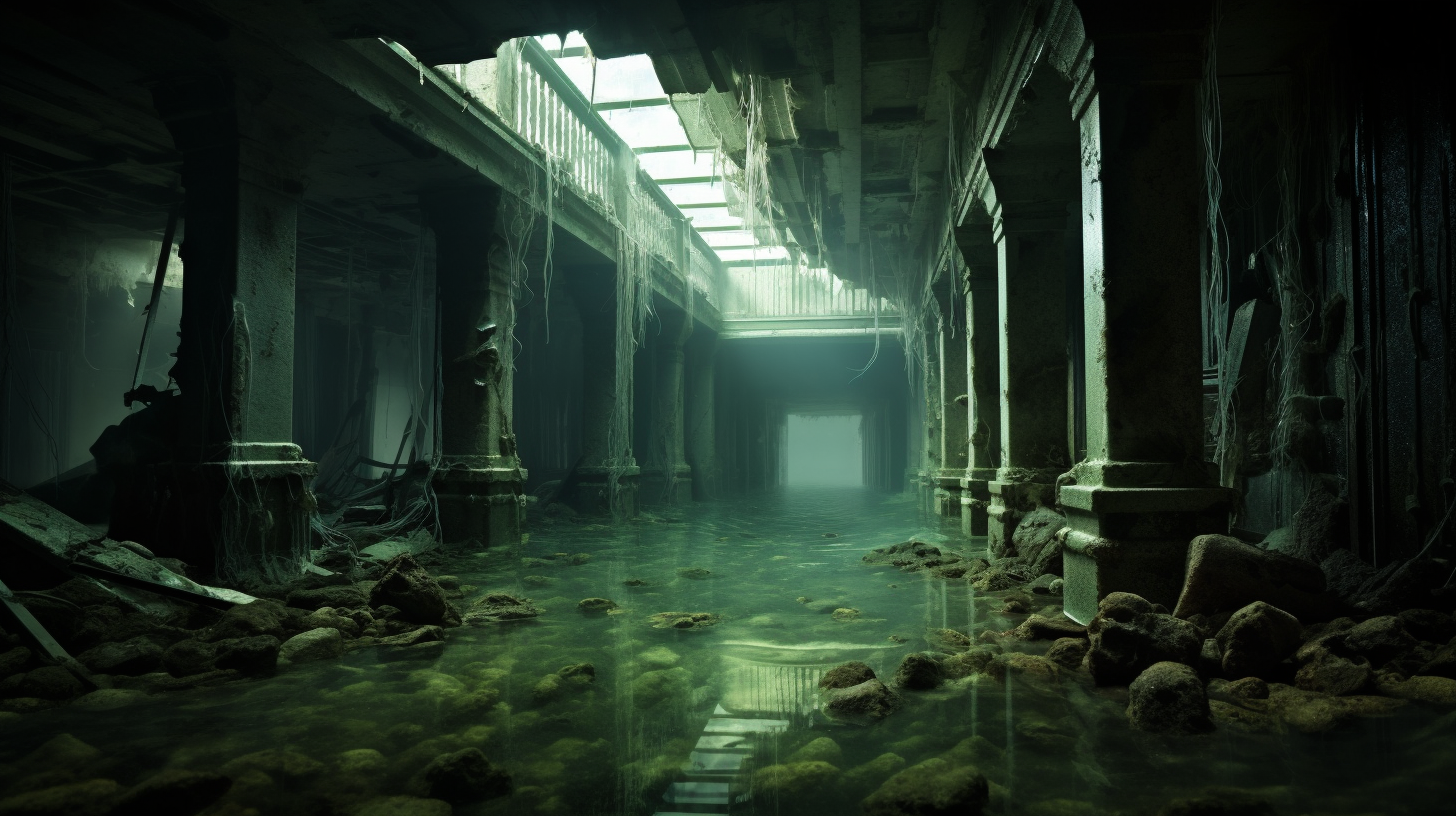Picture, if you will, the once-thriving coastal cities, their bustling streets now silent and their skyline submerged beneath the wrathful waves. Skyscrapers that clawed at the skies now serve as skeletal remains of human ambition, their shattered windows gazing despondently up at the watery expanse that has silenced their hustle. In this transfigured reality, we visit not ruins, but rather attics of the ocean: the memory-filled remnants of a submerged civilization struggling for survival in sunken cities.
As the relentless rise in sea levels reshapes coastlines, it swallows entire metropolises. These urban Atlantis es persevere relentlessly under the sea’s oppressive embrace, marking terrains where humanity’s footprint has sunk too deep. The waters whisper secrets of past excess and present urgency, with survivors navigating the waterlogged conduits of their former lives, suspended between adaptation and surrender.
These aquatic attics are not barren relics but are, ironically, brimming with life. Nature, in her irrepressible impulse, has reclaimed the concrete and glass, with corals blooming where traffic lights once blinked. Fish navigate through the offices where deals were made and futures traded. Yet, even amidst the uncanny beauty, survival is a macabre dance on the edge of history’s blade.
The inhabitants of these drowned worlds have morphed into amphibious denizens. In improvised sub-aquatic homes, they breathe air rationed by precarious technology or catch it in greedy gulps above the surface before diving below again. They gather in the submerged squares, trading what goods can be scavenged from the depths or engineered in water-resistant enclaves. This is barter born from necessity, not nostalgia; the currency is survival, not sentiment.
Our survival strategies are as varied as the submerged streets. One might marvel at Maria’s floating greenhouse, first described in ‘Aqueous Archipelago,’ as an exemplar of tenacity—a beacon of aqua-agriculture. Another might witness the DIY energy solutions mentioned in ‘Solar Tides,’ an ironic glimmer of hope amidst the waterlogged decay.
Crafty survivors pilot rafts and submersibles among giants of glass and steel, the ‘solar haves and have-nots‘ clashing for dominion over the scant dry patches that serve as solar harbors. Bent but not broken, they bolster communities against the perpetual night that reigns below sea level, with resourcefulness and reclaimed energy tech lighting the gloom.
In the eerie calm between the storms, there are those who remember ‘Carceral Seas’ and the toxic catch of Arjun’s fishing nets. They’re reminded that what was not claimed by water was choked by waste. These same seas now shape their fate, a grim irony not lost on the survivors who, like the ‘Specters of Plastic,’ navigate a maze of man-made artificial reefs once known as city infrastructures.
Our new reality comes with a surreal lexicon: salvage divers, rooftop fisheries, algae cultivators—terms that embody a life aquatic, far beyond the scenarios once projected by scientists and denied by skeptics. We’ve become the very specter of an existence we never thought we’d lead, a humbling reminder that the ocean, ever patient, waits for no one.
To exist in these
Within these submerged tales, we find not just the remains of a world we failed to protect but a poignant illustration of endurance and ingenuity. As the planet reclaims what was always hers, humanity carves a new, if precarious, existence. These ghostly cities, dazzling in their underwater menace, are not mere sites of loss but are filled with the stories of those who refuse to be forgotten.
Join us next time when we dive deeper into the heart of this Aquatic Apocalypse, where we unveil the peculiar lives and innovations born out of the cataclysmic beauty of our new submerged reality. Because even in the darkest of waters, the human spirit finds a way to cast light.
